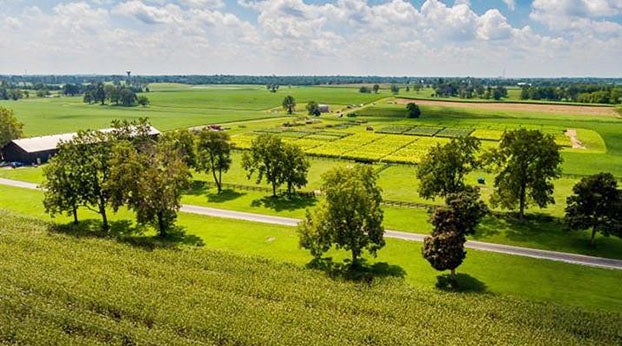FARM FACTS: Work on pastures and hay fields now
Published 12:51 pm Friday, February 24, 2017
By Will Stallard , U.K. Extension
Agent for Agriculture & Natural Resources
Now is the time to start improving your pasture and hay fields. A little work and money now can pay off in better livestock gains and better milk production. Make your plans to start overseeding clover right now. Early February is also the time to soil test and add fertilizer to your pasture and hay fields.
Overseeding Clover: Clover in your pasture increases the productivity to where livestock gain or milk better, more pasture is available to take hay from and more livestock can be run per acre. Adding clovers to pasture is the cheapest and easiest way to increase your livestock profits.
The easiest way to add clover to your fields is by overseeding. Follow these guidelines and you will have good success with overseeding clover.
1. Sow early before grass growth starts – February 5 until February 28 is the best. After this you are better off to disc and sow or use a no-till drill and herbicides to slow down the grass
2. Sow 6-8 lbs. of red clover with 1-2 pound of white clover. Use the high yielding and persistent varieties. Based on our U.K. test plots, the top five red clover varieties for yield and persistence through three years are: Certified Kenland, Freedom, Cinnamon, Kenway, and Starfire. The worse decision you can make is to buy common or medium red or uncertified because most of the time that will be the lowest yielder and seldom survives through the second year. Based on the U.K. test plots for white clover. The best looking at this time include: Regal Graze, Will, and Patriot.
3. Have pastures grazed close and keep cattle on the field to walk the seed in and to keep the grass from competing with the clover. A good rule of thumb is that if the grass is ankle high, it is too tall for overseeding so it should be disked before seeding or use no-till and a herbicide.
4. When cattle start to bite off the new clover, pull the cattle off the field and keep them off for four-six weeks to allow the clover to get a good hold.
5. Take a soil test and apply the needed lime, phosphate and potash. Don’t use any nitrogen, not even DAP because a little nitrogen is enough to feed the grass and choke out the new clover. DAP is a good choice the second year, but never at overseeding time. For overseeding it probably is best to wait to apply fertilizer until the field has been mowed or grazed off up in the early summer. This of course will only be true if your fertility levels are at least in the medium range. If you have to overseed with a fertilizer buggy then use only potash or super phosphate.
Fertilize Established Pastures and Hay Fields in February: Failure to fertilize pastures and hayfields according to soil tests is not the way to cut costs in cattle operations. Growing quality forage with good yields of pasture and hay lessens your cost of gain.
Good forage management begins with proper fertilization. Phosphorus, potash, lime and nitrogen may all be needed, but you will only know by taking a soil test. Take those samples now and plan a fertilizing program. The soil doesn’t have to be dry enough to plow, a little wet doesn’t hurt. We can get your soil test results in 7-10 days. Bring your samples to the U.K. Extension Office or ask your dealer to test your soil through our office and our soil sampling is a free service.
Now, when should you apply this fertilizer is the question I want to address. Most years it will pay you to put some fertilizer on in February and then again in May. The February fertilizer application will greatly improve yields and make your forage plants healthy for this growing season. You can also benefit from a nitrogen application in May after your first harvest of grass hay fields. This will stimulate new growth for another good yield. I generally recommend only 100 lbs. of urea or 150 lbs. of ammonia nitrate at that time.
For now the main thing to do is take a soil sample and apply the basic fertilizer and lime amounts needed to get good forage yields.
If you have questions about forage production or other agricultural topics we are just a phone call away at (606) 365-2447.



